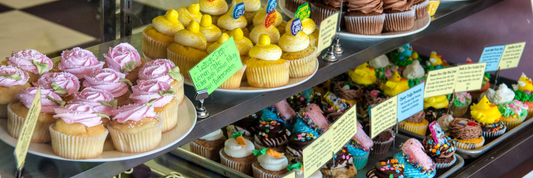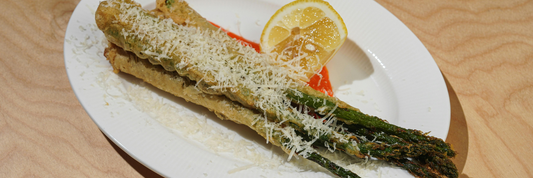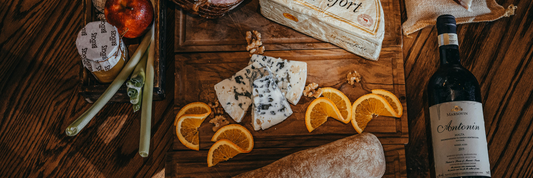In today’s competitive foodservice industry, choosing the right type of disposable cutlery can significantly impact your brand image, customer satisfaction, and operational costs. Whether you run a casual dine-in restaurant, a busy catering service, or a delivery-focused business, understanding the differences between wrapped and unwrapped cutlery is essential.
This guide explores the advantages and disadvantages of both options to help you make an informed decision that aligns with your business needs and values.
-
How to Choose the Right Disposable Wooden Cutlery
-
When to Use Wooden Disposable Cutlery
-
Wooden Cutlery vs Plastic Cutlery: Which Is Better?
What is unwrapped cutlery?

Unwrapped cutlery refers to disposable utensils provided without any packaging. It is commonly used in casual dining or self-service environments where customers serve themselves. This option offers a lower cost solution with minimal packaging waste, making it an economical and environmentally friendlier choice in certain settings.
What is individually wrapped cutlery?
Individually wrapped cutlery means each utensil is sealed in its own protective packaging. This ensures better hygiene and protects the cutlery during delivery and handling. Individually wrapped cutlery is often preferred for takeout, delivery, and catering services where maintaining cleanliness and customer confidence is a priority.
Wrapped Cutlery: Is It Worth the Extra Cost?
Benefits of Hygiene and Presentation
Wrapped cutlery comes pre-packaged, ensuring cleanliness and reducing the risk of contamination. This packaging often includes extras like napkins, condiments, or wet wipes, enhancing the overall customer experience and presentation, especially in takeout and catering services.
Downsides: Packaging Waste and Higher Unit Cost
The main drawbacks of wrapped cutlery are the increased packaging waste and higher cost per unit. This can impact both your business expenses and environmental footprint, making it important to weigh these factors against the hygiene benefits.
Hygiene vs Sustainability in Cutlery Packaging

Hygiene Advantages of Individually Wrapped Cutlery
Individually wrapped cutlery is critical in environments where hygiene is paramount, such as hospitals, schools, and airlines. It helps prevent cross-contamination and reassures customers about safety standards.
Sustainability Concerns with Excess Packaging
Excessive packaging contributes to environmental pollution and waste management challenges. To address this, many businesses are turning to eco-friendly alternatives like compostable wrappers and plant-based films, which offer a more sustainable approach without compromising hygiene.
When to Choose Wrapped or Unwrapped Disposable Cutlery

Based on Service Type
The choice between wrapped or unwrapped disposable cutlery often depends on your service model. For dine-in or buffet settings where customers serve themselves, unwrapped cutlery is usually sufficient and more cost-effective. In contrast, delivery and takeout services benefit from wrapped cutlery to ensure hygiene and protect utensils during transit.
Based on Target Customers
If your customers prioritize sustainability and reducing waste, unwrapped cutlery or minimally packaged options may align better with their values. Conversely, for hygiene-conscious customers—such as those in healthcare or corporate settings—individually wrapped cutlery provides reassurance and meets strict cleanliness standards.
Based on Brand Positioning
Your brand identity also influences cutlery choice. Premium or upscale foodservice brands often opt for wrapped cutlery sets that include napkins and condiments, enhancing the unboxing experience. Fast casual or budget-focused brands may prefer unwrapped cutlery to keep costs low and streamline service.
Wrapped Disposable Cutlery by Kimecopak

Individually Wrapped Cutlery Sets with Custom Branding
Kimecopak offers individually wrapped cutlery sets that can be customized with your brand’s logo and design. This not only promotes hygiene but also strengthens brand recognition and customer engagement.
Compostable Materials for Sustainable Packaging
Committed to sustainability, Kimecopak uses compostable materials for its cutlery wrappers, including plant-based films and biodegradable papers. This approach helps reduce environmental impact while maintaining high hygiene standards.
Unwrapped Wooden Cutlery: Minimalist, Cost-Effective
Bulk Supply for Dine-In and Controlled Environments
Unwrapped wooden cutlery is ideal for bulk supply in dine-in restaurants and controlled environments where hygiene risks are low. This minimalist approach reduces packaging waste and simplifies service without compromising functionality.
Food-Safe, Smooth Finish Without Wrapper Waste
Wooden cutlery offers a natural, food-safe alternative with a smooth finish that feels comfortable to use. Without individual wrappers, it eliminates unnecessary packaging waste, supporting eco-friendly business practices.
Which Is Best for Your Business?
| Criteria | Best Option |
|---|---|
| Hygiene | Individually wrapped cutlery |
| Sustainability | Unwrapped or compostable wrapped cutlery |
| Cost | Unwrapped cutlery |
| Branding & Premium Feel | Wrapped cutlery |
Conclusion
Choosing between wrapped or unwrapped disposable cutlery depends largely on your business model, customer expectations, and sustainability goals. Wrapped cutlery offers superior hygiene and a premium presentation, making it ideal for delivery, takeout, and hygiene-sensitive environments. On the other hand, unwrapped cutlery, especially wooden options, provides a cost-effective and eco-friendly solution suitable for dine-in or controlled settings where hygiene risks are minimal.




